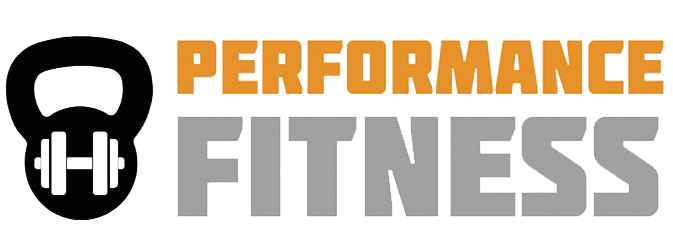Best ways to move heavy sh*t
 Pssst. I have a secret. Remember my last post about why it’s so important to strength train? Well hear this: getting strong is simpler than you might think.
Pssst. I have a secret. Remember my last post about why it’s so important to strength train? Well hear this: getting strong is simpler than you might think.
Notice I said simpler—not easier. That’s because gaining strength and lean muscle—especially for women who are not blessed (or cursed?) with higher levels of testosterone—is hard work that takes consistency, dedication and progressively more resistance.
But it is attainable and it is simple because there are only so many ways the body can move with its finite amount of joints. Yes, there are over 600 muscles in the human body, but they don’t all need their own isolation machine to exercise them.
Out of those 600, there are eleven major muscle groups, and all of these muscles can be exercised harmoniously, which is how we humans are designed anyway. When you reach for a glass in your kitchen cabinet, for instance, you don’t do it with one muscle. You use a lot of muscles.
Here’s a list-in no particular order, including a quick and dirty explanation of location and primary job, for the 11 major muscle groups:
- Trapezius – The upper, middle, and lower trapezius move the neck and shoulders. Bend your head back, move your neck to the side or shrug your shoulders and you’ve used the trapezius muscles. Shrugs, high pulls, and rows are among the exercises that work the trapezius muscles.
- Deltoids (shoulders) are responsible for moving the arm forward, back and out to the side (i.e. – flexion, extension, and abduction). Shoulder presses and push-ups work the deltoids.
- Pectoralis Major (chest) – flexes, horizontally abducts (brings across the body) and inwardly rotates the humerus (arm). Chest presses, push-ups and dips are a few exercises that work the pecs.
- Biceps Brachii – flexes or bends the arm at the elbow joint. Bicep curls work the biceps (duh), but chin ups are my favorite for working this muscle.
- Triceps Brachii – extension or backwards straightening of the arm at the elbow joint. Dips or close grip/diamond push-ups are a couple of the exercises that work the triceps.
- Latissimus Dorsi ( mid back) – This is one of my favorite muscles. Is having a favorite muscle weird? Anywhoo, the lats extend, rotate and bring your arm to your side. They also play a role in shoulder and back stabilization. Want to have a “sexy back”? Pull ups (using a variety of hand positions), body rows and one arm rows are my recommendations.
- Gastrocnemius – This is one of your calf muscles. It is responsible for plantar flexion–you do this when you point your foot or stand on tip-toe–and plays a role in bending the leg at the knee joint. Calf raises are your go to exercise for this muscle.
- Abdominals – This group of four muscles is vital for flexion (forward bending), rotation and lateral (side) bending of the trunk. Your deep abdominal muscles also play a major role in spinal stabilization. FUNCTIONAL strength of the abs can translate into a strong supported lower back. We all have washboard abs (aka – a six pack), it’s just that some of our washboards are hidden under a pile of laundry (aka – fat). The washboard/six pack/Rectus Abdominis will only be visible when body fat is significantly low or reduced through fat burning exercise and proper diet. Ab exercises DO NOT make a six pack. As the saying goes – abs are made in the kitchen.
- Quadriceps – made up of four muscles on the front of your thigh, the quads are responsible for knee extension and hip extension. Every time you stand up out of a squat, or heck, stand up from a chair, you use your quads.
- Hamstrings (my other favorite muscle group) are located on the back of thigh and are made up of 3 muscles. They’re responsible for knee flexion (bending) and hip extension. When you hinge or bend forward at your hips and stand up, the hamstrings are the muscles that get you to the standing position. My favorite exercises for working the hamstrings are the deadlift and the swing.
- Gluteals – Baby got back! Or in this case, baby got buttocks. Your gluteals or glutes are one of the strongest muscles in your body, and are used to extend and laterally (side) rotate the hip. Hip thrusts (thanks Bret Contreras and Body Yenta for making this one a part of my repertoire), hip bridges, deadlifts and squats are the most awesome of all the exercises that work the glutes – IMO.
Phew! Now that we’ve covered that – back to the major movements the human body completes in a typical day. There are seven of those:
Squat
Lunge
Push
Pull
Bend
Twist
Gait
With these two relatively simple lists, we can come up with an even shorter list of compound exercises—movements that work multiple muscle groups.
The following list, modified from a list from my fav fitness guy, Dan John, comprises the FIVE—yes that’s right—just FIVE compound exercises you need to do to sculpt a strong, lean, beautiful you. If you do nothing else, do these five at least twice a week:
SQUAT – works quads, glutes, hamstrings, calves
PULL-UP – works lats, pecs, biceps, abs
PUSH-UP – works pecs, delts, triceps, core
DEADLIFT – works hamstrings, glutes, core
WEIGHTED CARRY – works…Everything!
No access to barbells, dumbbells or kettlebells? No problem. Your very own bodyweight is just as good for providing the resistance you need to gain the strength you desire. Tune in next time for the top 10 bodyweight exercises.
